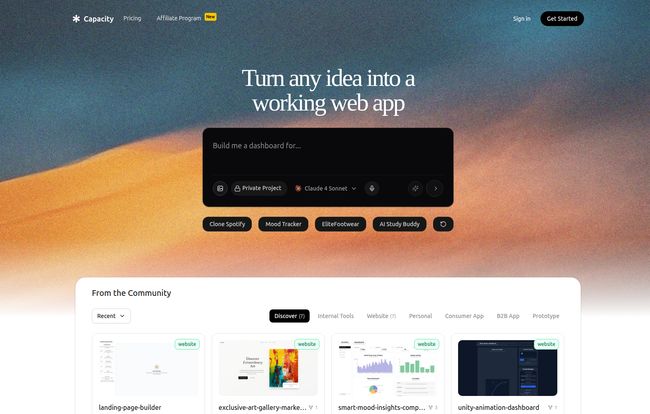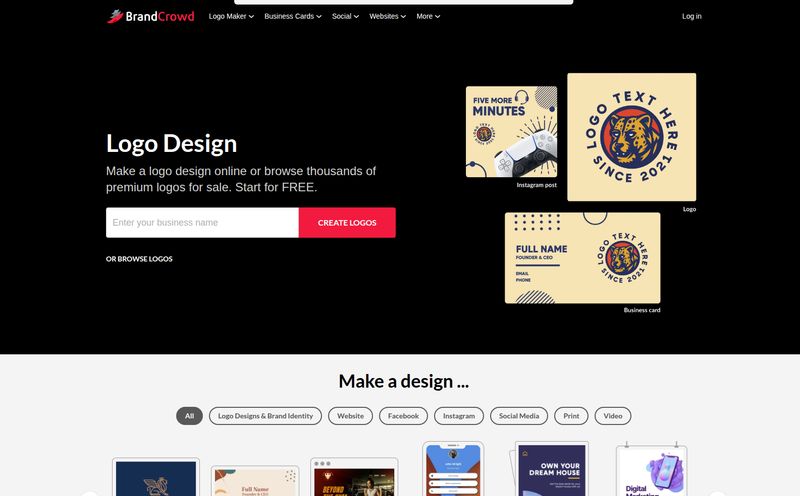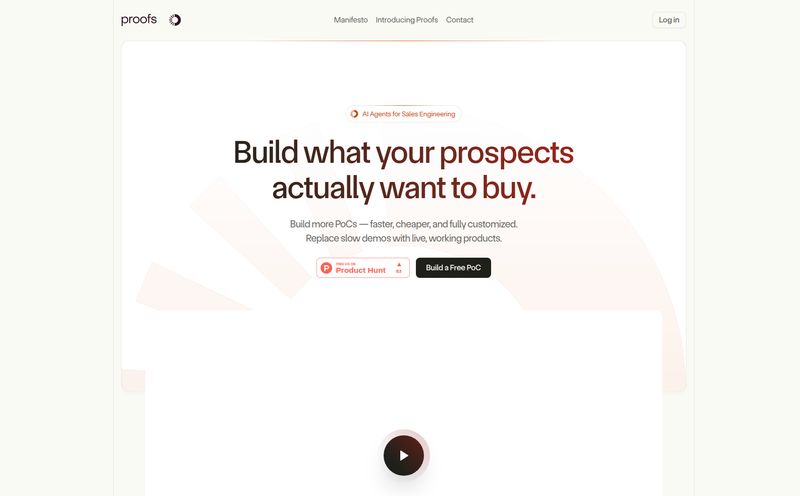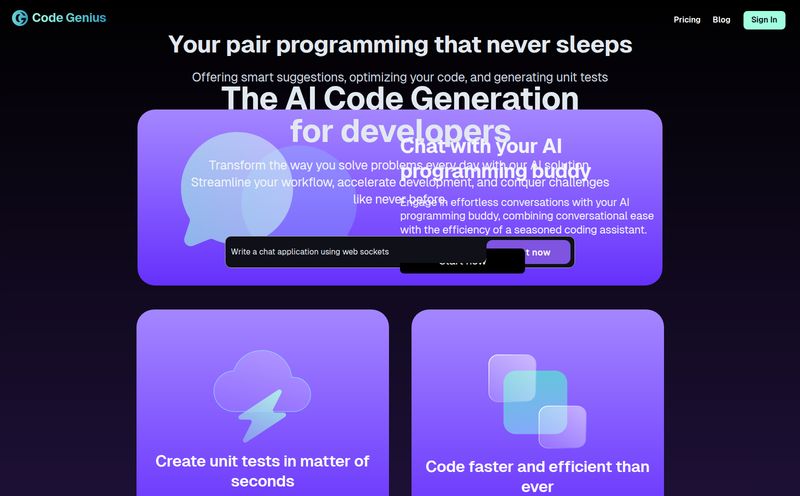I’ve been in the SEO and digital marketing game for a long, long time. And if there’s one constant, one soul-crushing bottleneck that has killed more brilliant campaign ideas than I can count, it's this: development time. You have a fantastic idea for a custom dashboard, a niche SaaS tool, or an interactive internal portal. You pitch it. Everyone’s excited. Then comes the quote from the dev agency. Oof. Suddenly, your brilliant idea is shelved for “Q3… maybe Q4.”
We've all been there. The promise of no-code platforms was supposed to be the great equalizer. And for many things, like landing pages and simple sites, tools like Webflow have been a revelation. But for a full-blown application? With a database, user logic, and all the fixings? That’s always felt like a bridge too far for the non-technical folks.
Then I stumbled upon a tool called Capacity. The claim is audacious: turn any idea into a working web app using plain English. No code. No drag-and-drop wireframing. Just… words. My inner skeptic, honed by years of overhyped MarTech, immediately raised an eyebrow. But my inner tinkerer, the one who loves new shiny things, just had to see for himself.
So, What Exactly Is Capacity?
Let's get this straight. Capacity isn’t another website builder. It’s an AI-powered platform designed to generate entire full-stack web applications. You don’t drag buttons onto a canvas. You literally talk to it. You type in a prompt like, “Create a project management dashboard with a Kanban board and a task list,” and it goes to work, generating the frontend, the backend, and the database schema.
Think of it less like a set of digital LEGOs and more like having a conversation with a hyper-efficient, infinitely patient junior developer who just happens to be a world-class expert in modern web frameworks. It's a fundamental shift in how we think about creation. Instead of learning the tool's interface, the tool learns your intent.

Visit Capacity
The Features That Actually Matter
A feature list is just a feature list until you translate it into what it means for you. So let's break down the claims on their site into real-world impact.
Natural Language as Your New IDE
This is the core magic trick. The ability to just describe what you want is… well, it’s wild. The entire process feels more like creative writing than software engineering. This lowers the barrier to entry to practically zero. If you can write an email, you can start building an app. This is the part that gets me most excited. It democratizes creation in a way that even visual builders can't quite match.
Blazing Fast Speed (and Absurd Savings)
Capacity claims to be 20x faster than traditional development and 10x cheaper than hiring a developer. Let's put that in perspective. A simple MVP could take a freelance developer a few weeks and cost you thousands of dollars. With Capacity, you could potentially have a working prototype in an afternoon for the price of a few pizzas. That’s not just an incremental improvement; it's a total change in the economics of innovation. You can afford to test wild ideas. You can afford to be wrong.
It Generates Real, Production-Ready Code
Okay, this was my biggest point of skepticism. Most code generators of the past produced what we lovingly call “spaghetti code”—a tangled mess that works, sure, but you wouldn’t want to maintain it. Capacity, however, builds on a seriously robust and modern tech stack: Next.js, Tailwind CSS, TypeScript, and tRPC. For the non-devs in the room, just know that this is the stuff that serious, high-performance web apps are built with today. It's clean, scalable, and secure. This is a massive green flag.
You're Still in the Driver's Seat
The biggest fear with any all-in-one platform is getting “locked in.” What happens when you hit the platform's limits? This is where Capacity really impressed me. You get 100% custom control and full code exportability. This means you can use the AI to do the heavy lifting—the 80% of boilerplate work—and then hand the clean, human-readable code off to a developer (or tweak it yourself if you have the skills) for that final 20% of custom polish. It's the best of both worlds. You're not renting your app; you own it.
Who Is This Tool Really For?
I can see this being a game-changer for a few specific groups:
- The Scrappy Entrepreneur: Have an idea for a SaaS? Don't sink your life savings into building an MVP. Build it with Capacity in a weekend, test the market, and see if it has legs. The ability to rapidly validate ideas is priceless.
- The Overwhelmed Marketer: Need a custom lead magnet calculator? A unique internal tool to track campaign results? Instead of filing a ticket and waiting for six months, you could just… build it.
- The Curious Developer: Honestly, I see this as a powerful tool for developers too. Need to spin up a quick prototype for a new project? Use Capacity to generate the foundation. It handles the boring setup, so you can focus on the complex, interesting logic. It’s a powerful accelerator.
Is it for a massive, multi-national corporation's core banking system? Probably not. But for the 90% of web applications that most businesses and startups need? It seems incredibly promising.
Let's Talk Turkey: The Pricing Structure
Alright, so how much does this magic cost? The pricing is refreshingly straightforward, and frankly, very reasonable. They operate on a credit system, where different actions consume credits.
| Plan | Price | Key Features |
|---|---|---|
| Free | $0 / month | 5 credits/mo, 1 public project, Claude Sonnet 3.7 access. Perfect for testing. |
| Capacity Core | $25 / month | 150 credits/mo, private projects, custom domains, backend integration, no Capacity badge. |
| Capacity Pro | Custom | Custom credits, premium support, customer success. For teams with bigger needs. |
My take? The Free plan is a no-brainer to see what it's all about. But the Capacity Core plan at $25/month is the real deal. For the price of a couple of lunches, you get the ability to build and host real, production-level applications. Compare that to the cost of a single hour of a developer's time. It's not even a contest.
My Honest Take - The Good and The... Well, The Questions
After playing around with it, I'm genuinely impressed. The speed is startling, and the quality of the generated code (from what I could see) is legit. It feels less like a gimmick and more like a real productivity tool. The biggest pro is the sheer empowerment it offers. The gap between idea and execution has never been smaller.
But I still have questions, which is natural for any new technology. The provided info doesn't list any cons, so I'll frame them as areas of curiosity. How does it handle really complex, multi-step business logic? Is there a learning curve to writing effective prompts? (I suspect prompt engineering is a skill here, just like with other generative AIs). And how deep can the database customization go directly from the prompts? These are the things you'd only discover by building something substantial, but the initial signs are definetly encouraging.
Answering Your Burning Questions (FAQ)
The site has a great FAQ section, so let's cover the main points in a more conversational way.
What kind of stuff can I actually build with this?
Basically, a huge range of full-stack web applications. Think things like SaaS platforms, internal business tools, client portals, complex dashboards, and more. It's not just for simple brochure websites.
Do I seriously not need to know how to code?
Nope. That's the whole point. You describe your vision in natural language. Now, if you do know how to code, you can take the exported code and customize it even further, which is a fantastic option to have.
Is the code really mine? Can I export it?
Yes, absolutely. You have full ownership and can export the code at any time. This is a huge deal and avoids the vendor lock-in that plagues so many other platforms.
Can I work on a project with my team?
Yes! Capacity is built for collaboration, so you can work with your team members on building out your application. This is great for small agencies or startup teams.
How is this different from other AI tools or no-code builders?
Most no-code builders are visual (drag-and-drop). Most AI coding tools assist a developer (like code completion). Capacity is different because it generates the entire app from a natural language prompt, handling both frontend and backend from a single source of instruction.
Can I try it before I commit?
You bet. There's a free plan that gives you 5 credits a month to test it out and see how it works for your ideas.
Is This the Future for Most Creators?
Look, traditional coding isn't going away. For highly complex, specialized systems, you'll always need skilled engineers. But for the vast majority of web applications that businesses and entrepreneurs dream up? Tools like Capacity feel like the future.
It fundamentally changes the question from “Can we afford to build this?” to “What should we build next?” The ability to move from idea to functional app in minutes is a superpower. It removes the friction, the cost, and the time that kills so many great ideas before they even start. If you've ever had an app idea parked on a Trello board gathering dust, I honestly think you owe it to yourself to take the free plan for a spin. You might just surprise yourself.



